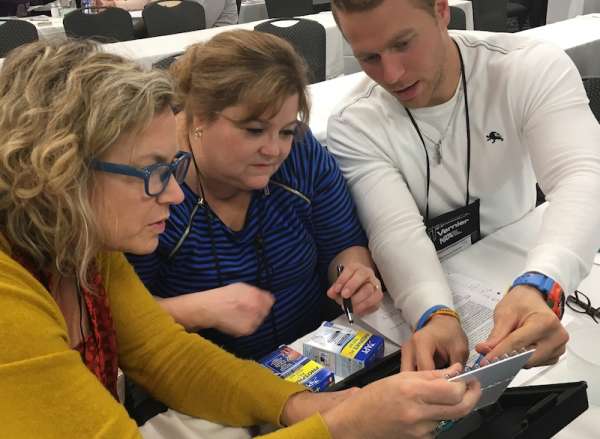Living the hive life: honey bees and pollinators
Lessons
# What beekeepers need to know
Students are introduced to all things necessary to own and maintain a beehive by watching the Responsibilities of a beekeeper video.
Files
# Support your local bee life
Students will discover the importance of pollinators, how to support local bee communities, and communicate what they have learned with a public service announcement or community education campaign.
Files
# Threats to beehives
Students will investigate threats to beehives including varroa mites and viruses.
Files
# Honey Bee Challenge
Students will determine the critical role honeybees play in food production by designing foraging routes for model bees. Lesson materials are available in a kit for $99.
Files
Teacher background
Within the past ten years, scientists have observed a sudden decline in the bee population across North America. Honey bees, bumble bees and native solitary bees are a major necessity for pollination of many fruit and vegetable crops. Although soybeans do not require bees for pollination, based on research conducted by members of United Soybean Board and the Honey Bee Health Coalition, there is evidence that soybean yield is improved by 18% when bees visit the blooms of soybean plants. The causes of the decline in bee populations are still being researched, but scientists have determined that it is not one but many factors contributing to the population decline. The most significant of these factors include pests, habitat loss, and pesticides.
The most serious pest affecting the bee population in the United States is the Varroa mite, a deadly parasite that, if not managed, can transmit fatal viruses to an entire colony of bees. Beekeepers and scientists are working to manage these pests, along with governmental (i.e. Ohio Department of Agriculture) and non-governmental groups.
Bees’ lack of access to good nutrition due to habitat loss also plays a role in their declining population. Since bees can only get food from flowers (through pollen and nectar) the absence of these plants throughout the year cause the bees to go hungry. It is important that areas have a variety of different flowers that bloom during different times of the year so the bees do not starve waiting for the flowers to bloom. Bees also require access to fresh, clean water which is not always abundant in urban areas. Additionally, as their habitats are cut down for human use, they can lack the space and resources needed to build their homes.
While pesticides can be helpful in eliminating pests, they often negatively impact bee populations as well. When bees are foraging for food, they can come in contact with pesticides which can be lethal or disorienting to the bee itself. To address this problem, farmers are encouraged to spray their pesticides at night when bees are less likely to be outside of the hive.
There are a variety of different ways people can increase a bee’s access to a good habitat and nutrition. First, they can plant pollinator-friendly plants native to their area. People can also put out fresh water for the bees. Finally, people can build “bee hotels” so that the bees have a place to live. By addressing the consequences of habitat loss, students can help improve the bees’ environment around the school. See this page for more information.
Next gen science standards
Science and engineering practices
- Asking questions (for science) and defining problems (for engineering)
- Developing and using models
- Using mathematics and computational thinking
- Constructing explanations (for science) and designing solutions (for engineering)
- Engaging in argument from evidence
- Obtaining, evaluating, and communicating information
Crosscutting concepts
- Cause and effect
- Systems and system models
- Structure and function
- Stability and change
Disciplinary core ideas/content
- LS1B Growth and development of organisms
- LS1C Organization for matter and energy flow in organisms
- LS2A Interdependent relationships in ecosystems
- LS2B Cycles of matter and energy transfer in ecosystems
- LS2C Ecosystem dynamics, functioning and resilience
- LS2D Social interactions and group behavior







Share this